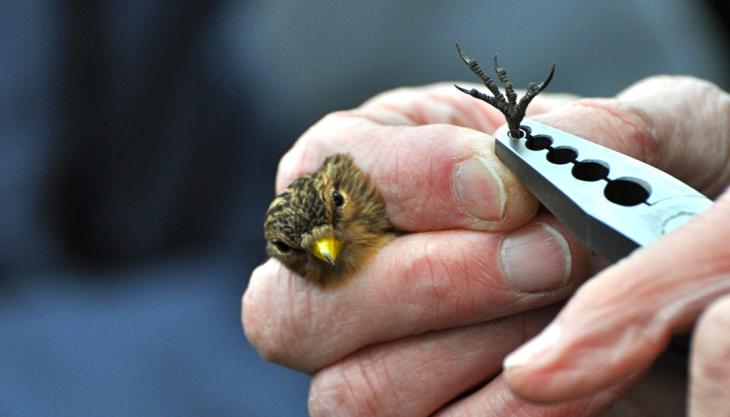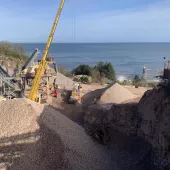Tracking twites for new insights

Data collected by RSPB and CEMEX will be used to plan further restoration at Dove Holes Quarry
OVER the next few weeks wildlife experts will learn a lot more about the life of a rare and secretive bird as they use technology to take a closer look at England’s most southerly twite population.
The twite is a songbird that, without help, may disappear completely from England. The decline of the species is so concerning that it is on the conservation ‘Red List’.
Twite numbers have suffered as the availability of autumn seeds as well as mature heather and bracken have become scarcer, resulting in less food and suitable nesting sites. There are only 170 pairs left in the country, and despite the Dove Holes Quarry near Buxton, Derbyshire being home to less than 10 pairs, it represents a significant population.
Weighing less than a pinch of salt (only 0.5g), tiny trackers will reveal how the twites of the Derbyshire quarry live. For the first time it will reveal where this population of twites go as they seek food and shelter. It is hoped that this research will help scientists to understand more about the behaviour of twites at this location, as well as what might help the species recover elsewhere in England.
The tiny technology has been designed to monitor the movements of the birds for less than a month before falling off as the birds molt. And trackers have only been used on male twites to avoid any disturbance to breeding females.
Katrina Aspin, the RSPB’s twite expert, said: ‘Although charming singers, twites have disappeared from much of England. So we are eager to learn more about the life of the twites at Dove Holes. If we can better understand how they are living, we can look at what steps we can take to help twite populations recover elsewhere. And, importantly, as the quarry both expands and is restored we can ensure the right conditions remain so the Derbyshire twites can continue to call the area home.’
Andy Spencer, sustainability director at CEMEX UK, said: ‘Restoration of quarries gives nature a home. At this quarry, originally, 5ha of land around the quarry operations were seeded with a special flower-rich mix to ensure supplies of dandelion and sorrel seeds that the young twites need to survive. Working in partnership with the RSPB has helped the survival of this rare bird. Tracking twites will give us even more information to enable us to restore land to help them.’
Two male twites have been fitted with tracking devices, and data will be collected over the next few weeks. The tracking information will help CEMEX plan the restoration of the Dove Holes Quarry, so that any work avoids important nesting sites.







